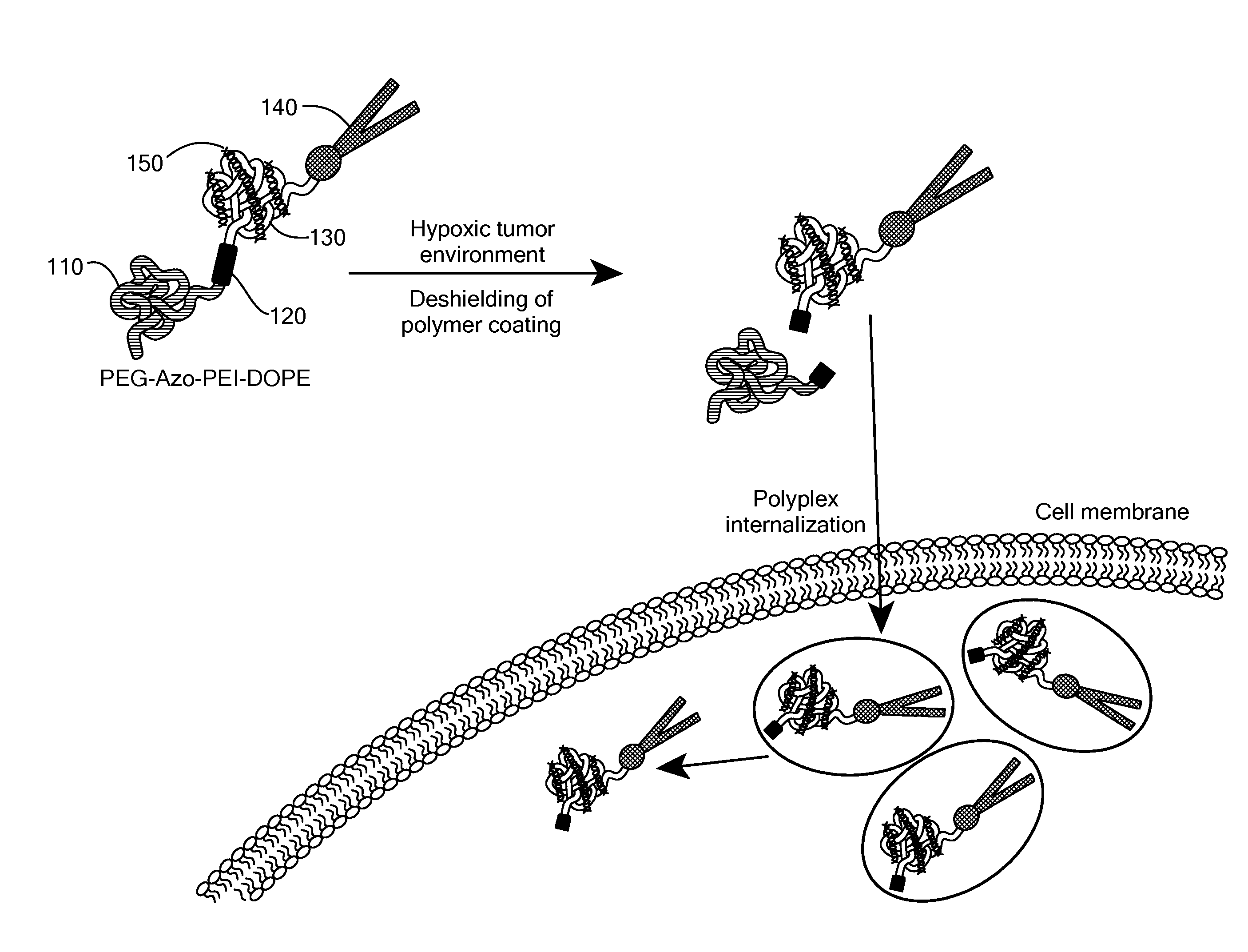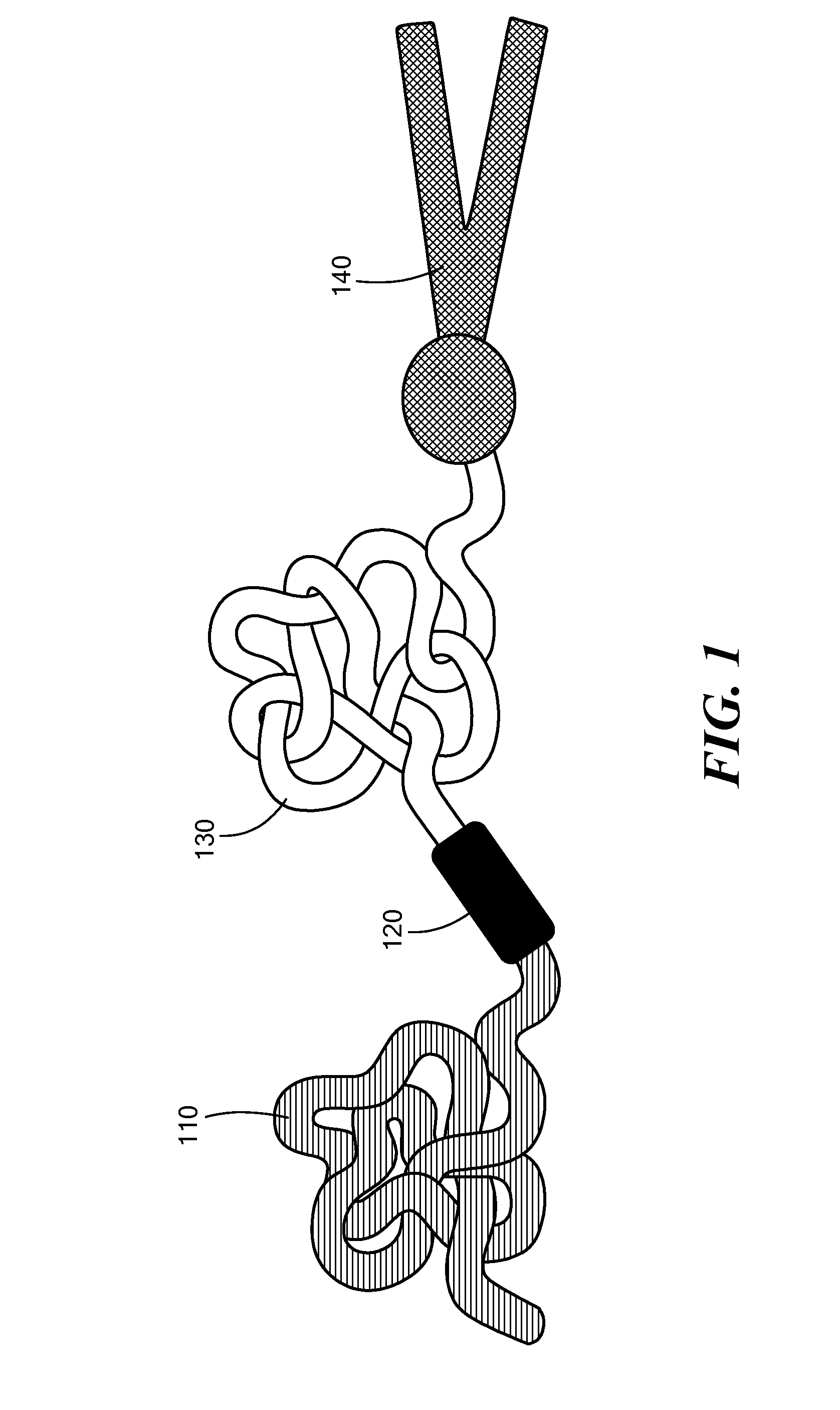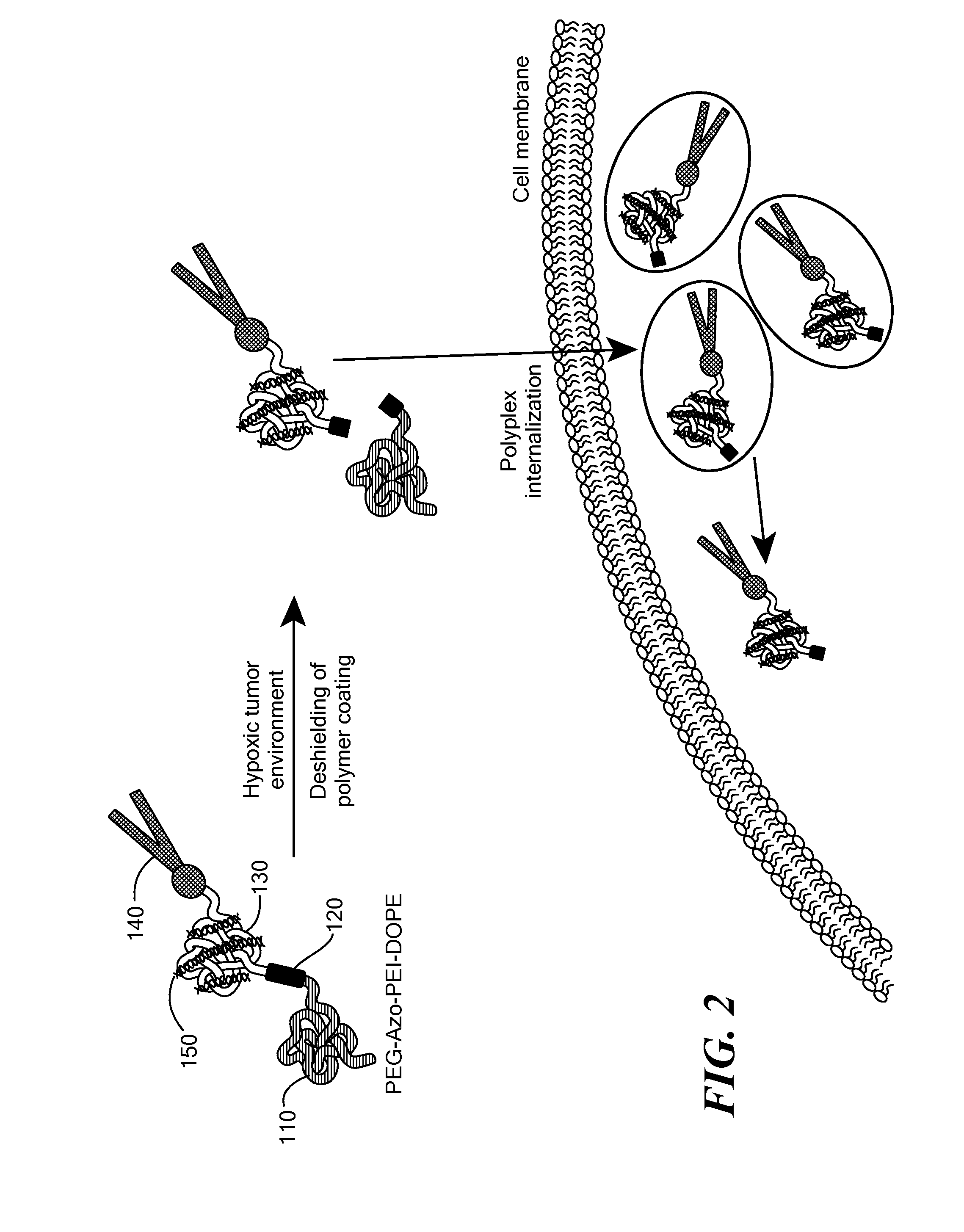Hypoxia-Targeted Delivery System for Pharmaceutical Agents
a delivery system and drug technology, applied in the direction of biochemistry apparatus and processes, drug compositions, organic chemistry, etc., can solve the problems of reducing therapeutic activity and challenging sirna delivery to hypoxic regions, and achieve the effect of increasing the cellular uptake of polynucleotides
- Summary
- Abstract
- Description
- Claims
- Application Information
AI Technical Summary
Benefits of technology
Problems solved by technology
Method used
Image
Examples
example 1
Materials and Methods
[0084]Materials.
[0085]The sequence of anti-GFP siRNA was 5′-AUGAACUUCAGGGUCAGCUdTdT-3′ (sense) (SEQ ID NO:1). [18] Pimonidazole hydrochloride and mouse antibody against reduced pimonidazole adducts were from Hydroxyprobe, Inc. (Burlington, Mass.). Goat anti-mouse PE (phycoerythrin)-conjugated anti-mouse antibody and Mini Collect heparin-coated tubes were from Santa Cruz Biotechnology (Santa Cruz, Calif.). Goat anti-mouse TRITC-conjugated antibody and rat liver microsomes were from Invitrogen (Grand Island, N.Y.). Mouse myeloma ascites IgG2a was purchased from MP Biomedicals (Santa Ana, Calif.). pEGFP-N1 plasmid encoding EGFP (enhanced green fluorescent protein) was from Erlim Biopharmaceuticals (Hayward, Calif.).
[0086]A2780 / GFP and NCI-ADR-RES / GFP Cells.
[0087]A2780 cells stably expressing GFP (A2780 / GFP) and NCI-ADR-RES cells stably expressing GFP (NCI-ADRRES / GFP) were obtained by antibiotic selection using 500 μg / mL G418 as in [19] after transfection of A2780 o...
example 2
Proposed Mechanism of Internalization of siRNA in Hypoxic Environment
[0115]The potency of the azobenzene unit for siRNA delivery was evaluated by linking azobenzene to PEG2000 at one end and to a PEI(1.8 kDa)-DOPE conjugate on the other end to obtain PAPD (FIG. 2).
[0116]PEG2000 was used as the hydrophilic block and for imparting stability in circulation. [8b, 10] The PEI-DOPE conjugate was introduced for siRNA complexation and to promote formation of micellar nanoparticles. [11] The hypoxia-sensitive polymer PAPD and its insensitive PEG-PEI-DOPE (PPD) counterpart were synthesized (FIG. 3 and data not shown) and expected to condense siRNA into nanoparticles with a PEG layer to protect it from the nuclease attack and impart stability in physiological fluids (FIG. 2). [7b, 8d, 10] The PEG groups would be detached from PAPD / siRNA complexes in the hypoxic and reductive [1b, 12] tumor environment because of degradation of the azobenzene linker; as a result PEI's positive charge would be e...
example 3
siRNA Binding and Cytotoxicity
[0117]Formation of complexes between PAPD and siRNA was demonstrated by an ethidium bromide (EtBr) exclusion assay and transmission electron microscopy (FIG. 4a, 4d). In line with previous results, [13] a higher N / P ratio of PAPD over PEI was required to quench siRNA fluorescence (16 and 4, respectively). Complexes protected siRNA against RNAse degradation (FIG. 4b) and demonstrated moderate unpacking (30% increase in EtBr fluorescence, FIG. 4c) after incubation in the medium containing 10% fetal bovine serum, in agreement with Refs. [7b, 8e, 13, 14].
PUM
| Property | Measurement | Unit |
|---|---|---|
| average molecular weight | aaaaa | aaaaa |
| average molecular weight | aaaaa | aaaaa |
| molecular weight | aaaaa | aaaaa |
Abstract
Description
Claims
Application Information
 Login to View More
Login to View More - R&D
- Intellectual Property
- Life Sciences
- Materials
- Tech Scout
- Unparalleled Data Quality
- Higher Quality Content
- 60% Fewer Hallucinations
Browse by: Latest US Patents, China's latest patents, Technical Efficacy Thesaurus, Application Domain, Technology Topic, Popular Technical Reports.
© 2025 PatSnap. All rights reserved.Legal|Privacy policy|Modern Slavery Act Transparency Statement|Sitemap|About US| Contact US: help@patsnap.com



